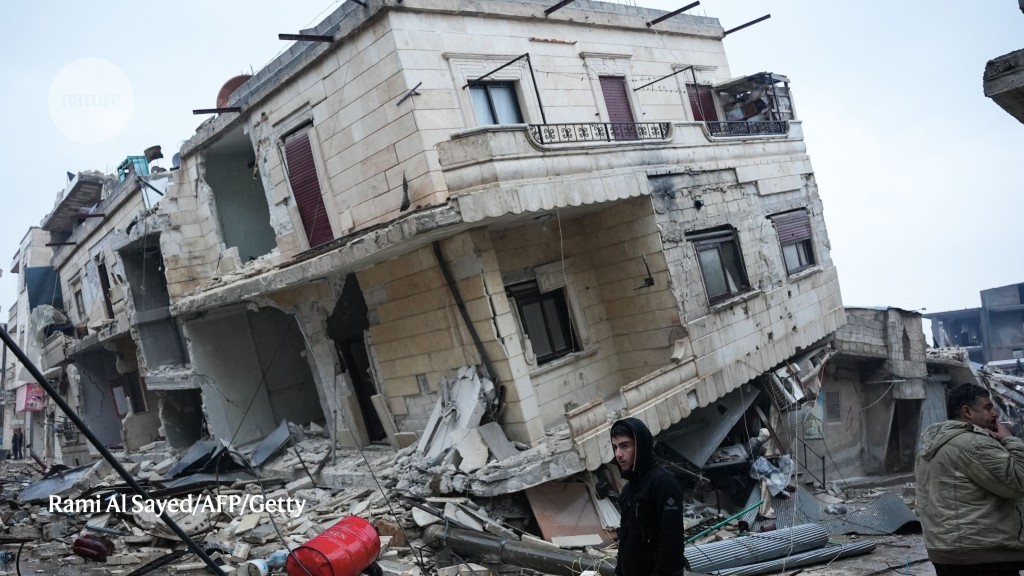The aftermath of the September 11, 2006 earthquake: a visit to Kahramanmaras, Turkey, to see what the survivors can tell us about the Earth
In a visit to Kahramanmaras, a city near the epicenter of the quake, Turkey’s President Recep Tayyip Erdogan spoke to survivors, saying “we are face to face with a great disaster.” Erodgan admitted there were shortfalls by his government in the immediate aftermath of the quake, but said nobody would be “left in the streets.” On Wednesday, the president will visit the worst-hit province of Hatay.
Aftershocks will continue to shake the area as local faults adjust to such a huge initial tremor, and scientists say that process could continue for not just days but months or even years. There is a chance of a bigger aftershock than the one that happened last week.
Earthquakes are products of plate tectonics: Plates are great masses of rock that move independently in the earth’s crust, but contact each other along faults. “Eventually, the stress and strain is going to overcome the friction that is holding the rocks together, and those rocks are going to break in an earthquake,” says Bohon. Waves form when rocks break, and they are what we feel as shaking.
The East Anatolian fault is a well-known fault line in southern Turkey. Specifically, this was a strike-slip earthquake, meaning stress built up between two masses of rock moving horizontally in opposite directions until the fault ruptured. It was also very shallow underground, meaning it created more intense shaking at the surface. The San Francisco area was destroyed in 1906 by a strike slip fault called the San Marco Fault, which is also a strike-slip fault.
ANTAKYA and ISTANBUL, Turkey — Rescue workers in Turkey and Syria pushed into a third day of recovery operations on Wednesday as the death toll from this week’s massive earthquake reached a grim milestone.
The Detection of Sedat’s Body in a Syrian Building by Natural Disasters During the First Day of World War II
“I know my son is inside and I think he’s still alive. She toldNPR that his brother dug with his hands to find him. Hours later, as diggers chipped away at the ruins of the building, rescuers found Sedat’s body and wrapped it in a blanket for his mother to say goodbye.
Aid groups consider the first 72 hours after a natural disaster as crucial for rescuing survivors. In neighboring Syria, the government blames Western sanctions for making things worse, while the U.S. says they aren’t. The only U.N.-authorized road between Turkey and northern Syria was damaged by the earthquake so there is no heavy equipment to help those who have been displaced.
Dozens of countries, including Iran, Libya, and the United Arab Emirate have given hundreds of millions of dollars to aid Syria, and many more have given aid to Turkey as well.
More than 380,000 people have been displaced by this catastrophe, and the Turkish emergency management agency has set up more than 70,000 tents to house them.
The earthquake and its aftershocks have flattened buildings and sent rescuers digging through concrete debris to find survivors, with the death toll expected to increase further. Nature spoke to four researchers about the seismic activity in the region and what the next few days will bring.
Geophysical consequences of a massive earthquake in Syria: the Gaziantep building as a testbed for the future of the Anatolian Plate
Most of Turkey sits on the Anatolian plate between two major faults: the North Anatolian Fault and the East Anatolian Fault. The tectonic plate that carries Arabia, including Syria, is moving northwards and colliding with the southern rim of Eurasia, which is squeezing Turkey out towards the west, says David Rothery, a geoscientist at the Open University in Milton Keynes, UK. Turkey is moving west at a rate of 2 centimetres per year. “Half the length of this fault is lit up now with earthquakes.”
The centre of Gaziantep would experience moderate-to-severe damage from a magnitude- 6.4 earthquake, if a study is to be believed. This is because most existing buildings are low-rise brick structures that are constructed very close to each other.
More than 11 years of conflict in Syria have made it difficult to enforce building standards. The buildings collapsed in the northwestern region of Syria after the earthquake. The war- damaged buildings in Syria can be rebuilt using whatever materials are available. They may have fallen down more quickly than things that are not built at a higher cost. We haven’t found out yet.
The weather in the region tonight is going to be very cold. That means that people who are trapped in the rubble, who might be rescued, could well freeze to death. So these hazards continue,” he adds.
